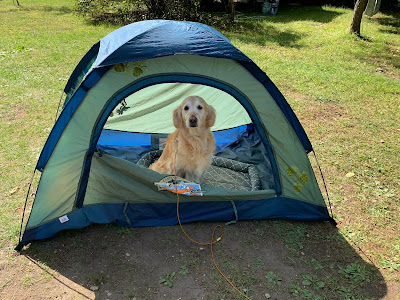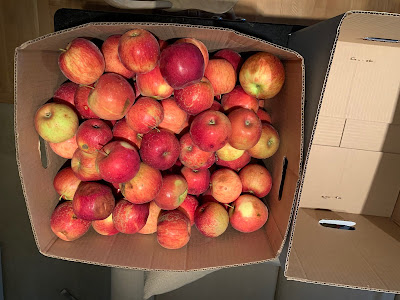I've shared my long-standing dislike of making pie pastry, so I don't have to repeat it here, other than to say I was recently sharing my opinion with a friend who is an excellent cook. She suggested I try Julia Child's recipe for the food processor.
I made a double-batch (2 double crusts), which was a lot of volume even for our fairly large capacity food processor, but it did come together and roll out pretty nicely. Last year I bought an extra large silicon pastry mat with circle markers, and that has made the job easier and faster to clean up.
This apple pie turned out pretty good. At first I didn't think the bottom was crisp enough, but I realized that part of that had to do with the fact that I couldn't keep my husband and son away from the pie long enough for it to cool as it should. The
pie bird is still a hit as it has really eliminated boil overs.
 |
Apple Pie
|
I also made two
pumpkin pies, using a James Beard recipe my friend also suggested. This involved par baking the crust. It only called for 10 minutes, so I cheated and used foil as a liner but no weights/rice, and the crust really receded into the pan. I had to stretch it out again before pouring the filling. I guess that's why the recommend the weights. Despite that, they turned out deliciously.
Julia Child's Food Processor Pie Crust
Via James Beard
1 1/2 c flour
1/2 c cake flour
1/2 tsp kosher salt
3/4 c (1 1/2 sticks) butter, diced, chilled
1/4 c vegetable shortening, chilled
1/2 c very cold water
In the work bowl of a food processor fitted with a metal chopping blade, combine the flours and salt. Pulse once or twice to blend. Add the butter and shortening and pulse five or six times to cut the fat into the flour. The mixture should resemble coarse crumbs. With the processor running continuously, pour the water down the feed tube all at once. As soon as the dough begins to form a ball around the blade, stop the machine. Lay a piece of plastic wrap on a work surface and dump out the dough onto the plastic, scraping the bowl and the blade with a rubber spatula. Pat the dough into a ball, wrap tightly, and refrigerate for at least 1 hour before using.

































































